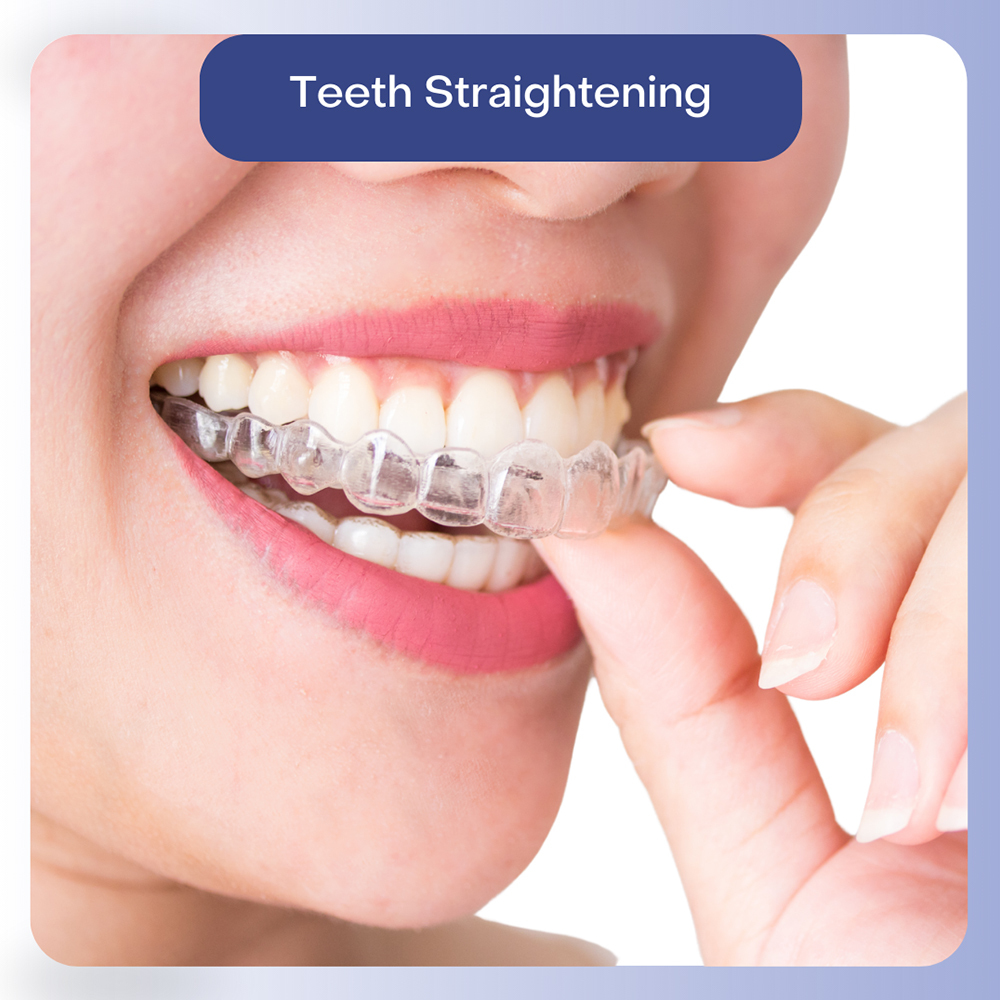Table of contents
 Teeth straightening can be used to correct numerous problems, including the following:
Teeth straightening can be used to correct numerous problems, including the following:
The treatment process for braces and clear aligner systems is minimally invasive. Modern orthodontics is extremely effective in straightening teeth. Nowadays, even complex tooth misalignment can often be addressed with clear aligner systems like Invisalign or other discrete options like clear Damon braces.
A quick online search will uncover many websites promising you can straighten your teeth without braces. They offer hacks and alternative treatments that may sound tempting but can permanently damage your teeth.
Unfortunately, there are websites with tutorials showing how to create your own homemade braces. Please don’t try this; it is an extremely bad idea, and these DIY remedies will not give you a beautifully straight and healthy smile. The potential side effects of trying these treatments could be worse than having slightly wonky teeth.
This is because your teeth have roots held in their sockets by ligaments, which are stretchy pieces of tissue. If you try straightening your teeth, you can strain your tooth roots and ligaments. Potential results of trying DIY teeth straightening can include the following.
Another idea you might find online is using a retainer for teeth straightening. Retainers are used after you complete orthodontic treatment and will not straighten your teeth. Instead, they are used to retain or hold your teeth in the proper positions once you complete treatment.
A retainer is essential because for your teeth to move, they must move positions in your jawbone. Afterward, your jawbone needs time to remodel around the tooth roots because they will be in a slightly different place in your jaw. Until this occurs, there is a risk that your teeth could travel back to their original positions, wasting your hard work, time, and money.
Orthodontists are dental specialists with the training and expertise required for these advanced treatments. They can first ensure that your teeth are suitable for braces. Not everyone can have this treatment, for example, anyone with decayed or weakened teeth or gum problems.
An orthodontist has advanced knowledge of all the braces systems available to ensure you get the right treatment for your needs. They will ensure your teeth are straightened comfortably and safely, and the braces system will provide the desired results.
Your orthodontist will also need to see you regularly during treatment so they can monitor your progress carefully. This is essential as fixed braces need tightening and adjusting. Removable aligner systems like Invisalign also require careful monitoring to ensure treatment progresses as planned.
If you try to straighten your teeth or use a DIY kit, there is a far higher risk that you will damage them, sometimes causing irreparable damage to teeth and gums.
Orthodontic treatment can take a year or longer to complete. However, if you only require minor tooth movements, such as correcting the positions of teeth that are only slightly crooked, there may be a quick solution.
For example, using Invisalign for overlapping front teeth might be an option. Cosmetically oriented brace systems are available, including clear aligner systems that can quickly and effectively complete minor tooth movements. Some orthodontic treatments are designed to complete these tooth movements in a few weeks or months. Shorter treatment times are reflected in the pricing of these systems.

My name is Victoria Kushensky. I am a general dentist dedicated to remaining at the forefront of my field. Combining compassionate care with extensive knowledge, I offer cosmetic and general dentistry services as well as advanced root canal treatments.
I earned my Doctor of Dental Surgery (DDS) degree from the esteemed New York University College of Dentistry. Throughout my career, I have honed my skills in various dental procedures, ensuring effective treatment for each patient’s unique needs. I prioritize patient comfort and understanding, taking the time to thoroughly explain procedures and address any questions.
More about Dr. KushenskyMy NJ Dentist: Victoria Kushensky, DDS
385 Prospect Ave Suite 304
Hackensack, NJ 07601
(201) 298-8000